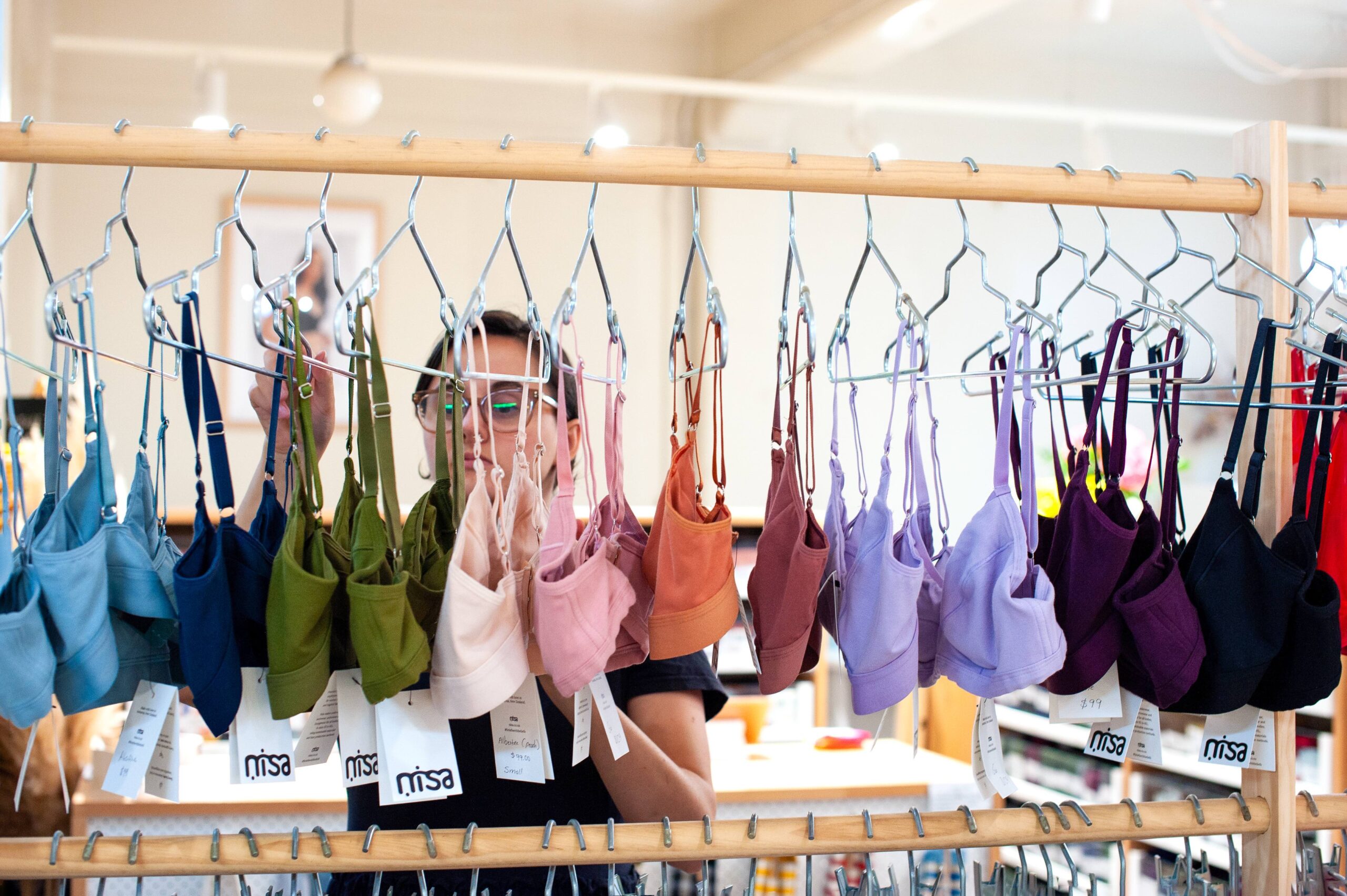Daydreaming is good for our happiness and health. It inspires, gives us purpose and makes us feel good. We look at why dreaming is a stepping stone to achieving goals and how to tap into that dream time.
The turning over of a new year often brings the pressure of writing a list of resolutions that we think we should tick off, then don’t, despite our best intentions. But what if we tried a different tactic during this magical time of year and just allowed ourselves a bit of space to dream?
I know for a fact that when I get some downtime my mind starts to soar up into the clouds where it percolates for a while – then boom, I’ll have my own personal eureka moment; a new idea that excites me and subsequently fills me with feelings of satisfaction and joy.
After all, British physicist Isaac Newton developed his law of gravity when he saw an apple fall from a tree while he was enjoying a relaxing moment in his mother’s garden.
And Einstein is believed to have begun his theory of relativity while daydreaming about riding or running beside a sunbeam to the edge of the universe.
You don’t need to take a holiday to allow yourself time to dream. In fact, new research tells us you only need a few minutes. It’s something adventurer, motivational speaker, leadership consultant and self-confessed dreamer, Jamie Fitzgerald, practises.
Fitzgerald is best known for becoming the first New Zealander to cross the South Pole on foot by dragging a sled across ice for 52 days in 2007. In 2003, he and Kevin Biggar (who also accompanied him on the South Pole mission) rowed 5000 kilometres across the Atlantic in an ocean race they not only won, but in which they also set a world record.
“Some people say you need to go and sit on a beach and look into the waves to dream. I’m not so sure I believe in that,” Fitzgerald says. “Some of the best dreams I’ve had are with a pad and pen when I’m sitting on a busy flight crammed in by people on either side of me… it doesn’t have to be all about whale song and listening to a kookaburra with cucumbers on your eyeballs.”
A study by the University of California, Santa Barbara (2012) published in the journal Psychological Science showed that great ideas come after ‘time out’. It showed that people who returned to a difficult task after taking a break and doing an easy task boosted their performance by around 40 per cent. There was little or no improvement for people who did another demanding task during the break, used it to rest or did not have a break at all.
Turning dreams into measurable projects Fitzgerald, who now runs his own company, Inspiring Performance, describes himself as a “dreamer”. “I enjoy using my imagination, I enjoy asking questions like, ‘How might we achieve something?’ or ‘What could this look like?’ or ‘What might be possible?’ You could describe dreaming as a growth mindset rather than a fixed mindset, so I think there is a big connection between dreaming and dreaming in words of imagining the future, and a connection to the way you see the world in the mindsets or lenses you apply to your day-to-day life.
“I’m a dreamer in that sense or I probably wouldn’t have thought some of the projects that I’ve taken on were even possible. They began as dreams and they turned into goals, then measurable plans and projects,” says Fitzgerald. “Dreams for me can be very similar to an inspirational purpose for a person or organisation. The benefit of dreams is that they offer us direction. They offer us an example of what some sort of new horizon could be for the future. If we listen to our dreams it can provide us with some sort of meaning or intent.”
Dreams can be a big part of the motivation for underlying goals, says Dr Alice Boyes, psychology writer and author of The Anxiety Toolkit (Penguin Random House). Boyes dreamed of one day writing a book. When she started blogging she had the goal to write regular blog posts, since the practice of writing helped improve her writing as well as stimulate her ideas.
Taking action on that “goal” led to the “dream” opportunity of being approached by a publisher to write a book, even though it wasn’t something she was actively pursuing when the opportunity came along.
“People’s actions often have a variety of motivations underlying them, some of which may be more in the goal category, and others in the dream category,” Boyes says.
“For example, a goal might be to finish a PhD, a dream might be to be able to look back on your life and career and see that you’ve made a significant contribution to your field and to people’s lives. Both the more proximate goal and more distal dream help provide the motivation for the behaviour.”
Getting the right mix
Having a mix of dreams and goals is healthy, says Boyes. It’s okay to have dreams without necessarily knowing how you’re going to achieve them, as long as you balance that with specific plans and goals on which you are actively and consistently working.
“Having too many goals and too few dreams can leave you feeling out of balance, that you’re not in control of your life, and like you’re not on the life plan you want to be on,” Boyes says. “Having too many goals and too few dreams can lead to not seeing the forest for the trees, and not recognising the bigger picture of why you’re doing what you’re doing. This can lead to being inflexible with your goals, and not recognising that there are often several different paths to dream, even if a specific goal isn’t working out.”
Ask yourself the right questions
Water ballerina and playwright, Pip Hall, takes the flexible approach in her role as co-founder of the popular inclusive water ballet group, Wet Hot Beauties. A few years ago, Hall and friend Judy Dale had an “uber dream of doing something escapist” but they didn’t know what.
“We had this really strong feeling but we couldn’t quite pinpoint it… we were open to where that led.”
They heard about a friend doing water ballet and thought they’d give it a go but quickly discovered there weren’t classes that catered for adults. This led them to establish Wet Hot Beauties, which now has 60-plus members. Anyone can join, no matter your age or gender. As a result, they’ve been helping others to fulfil their dreams too.
“The feedback we get is mainly about escapism, the idea of having a magic time each week for just them. The community aspect of it is also really empowering,” says Hall. “People turn up to have a good time but there are these by-products that come out of it. They say ‘I never dreamt I’d feel like this’, ‘I never dreamt I’d feel so sexy’, ‘I never believed I’d be strutting my stuff in front of 400 people’, so that’s really validating.”
During group planning sessions, the Wet Hot Beauties have a stage called “our dream time” when they get together and fantasise about what their shows are going to be like. This year’s production, to be held at Auckland’s Parnell Baths on February 27, has been inspired by the Disney movie Fantasia. “We don’t consider anything like budget right at the beginning of each creative phase,” says Hall. “We don’t limit ourselves by ‘How could we do that?’, [or] ‘We couldn’t afford that’. We think, ‘What could be the most awesome show that we could put on?’
“It’s really important to let yourself have that freedom to just dream incredibly large and then go back and think about the practicality. Even though we come up with these crazy ideas we think we could never actualise, actually you find a way.”
The latest dream for the group is to have a purpose-built pool, and they’ve talked to a designer and had a conceptual drawing done of
what that might look like. It’s important to ask open ‘What if?’ questions when dreaming, says Fitzgerald. ‘Can I do this or can’t I do this?’ is the wrong question to ask. It needs to be, ‘What has to happen for this to be a success? ‘How might I go about getting the support I need?’
Keeping afloat
When Fitzgerald and Biggar were rowing across the Atlantic, they spent a lot of time dreaming to pass the time and keep themselves occupied mentally. “We’d offer dreams to the other person and the other person would have to fill the gaps,” says Fitzgerald. “Of course it was all fictional, but using the concept of daydreaming we tried to apply ourselves to different environments and imagining different scenarios and when it came time for us to problem-solve real things on board the boat, we were able to solve problems better because we had dreamed about other ambiguous things.”
Dreaming is not just useful for problem solving. It helps sustain our mood and can help prevent us from getting depressed, says Boyes.
“If you’re having a run of bad luck but still believe you’re going to eventually get to experience at least some of your dreams, it makes it easier to tolerate the bumps along the way. It helps provide a sense of identity. We get a sense of who we are from what our dreams are.”
It’s about the journey
Boyes points out that it’s okay to have quieter dreams, too. “There’s a lot of emphasis on people ‘getting outside their comfort zone’ etc. It’s okay to have quieter dreams. Some people may be more future-orientated or tend to set giant goals, and therefore get recognised more as being a dreamer.”
Hall enlisted personal and professional development coach, Rebecca Mason of Genratec, to help her transition some of her dreams, aspirations and goals into reality. “For me, one of my values is to keep growing and learning, because I think as we get older that’s something that can get really stagnant,” says Hall. “If you keep pushing yourself further, if you keep learning, you’re just going to have a freshness of life, no matter how old you are.”
For Hall too, it’s about taking some concrete steps. “There’s a difference between dreams and fantasies. Of course I’m never going to marry Benedict Cumberbatch but… if I really wanted to, I could climb Mt Cook because I can start tramping, I can start with little mountains.”
The journey of getting there is just as important as the dream, says Fitzgerald. When he reached the South Pole it wasn’t an anti-climax, but wasn’t a “yahoo moment” either. “I just had this enormous amount of satisfaction that I’d proven I was capable of doing something that I very much thought there was a chance I wasn’t good enough for.
It had started out as a dream and then we applied some project management and it came to life… I realised the South Pole wasn’t the end point, it was simply just one little milestone along this bigger journey that I’ve probably been taking myself on for the last decade.”
Now, in Fitzgerald’s work as a performance coach with people and organisations, the starting point is often simply looking back at their past for examples of when they have been at their best. When have they been at their most exploratory? “Because often those stories of our past make it a little bit easier to imagine the future,” he says.





